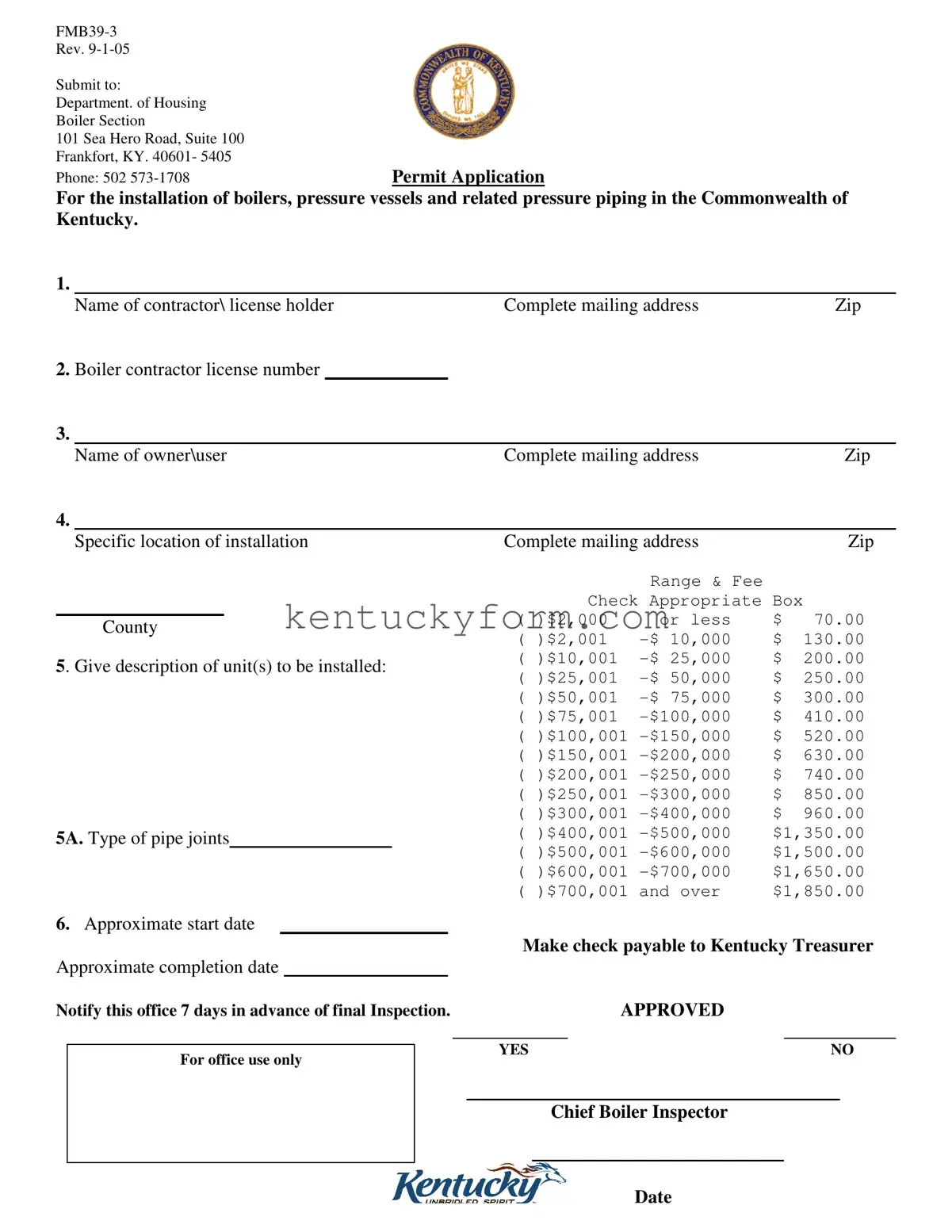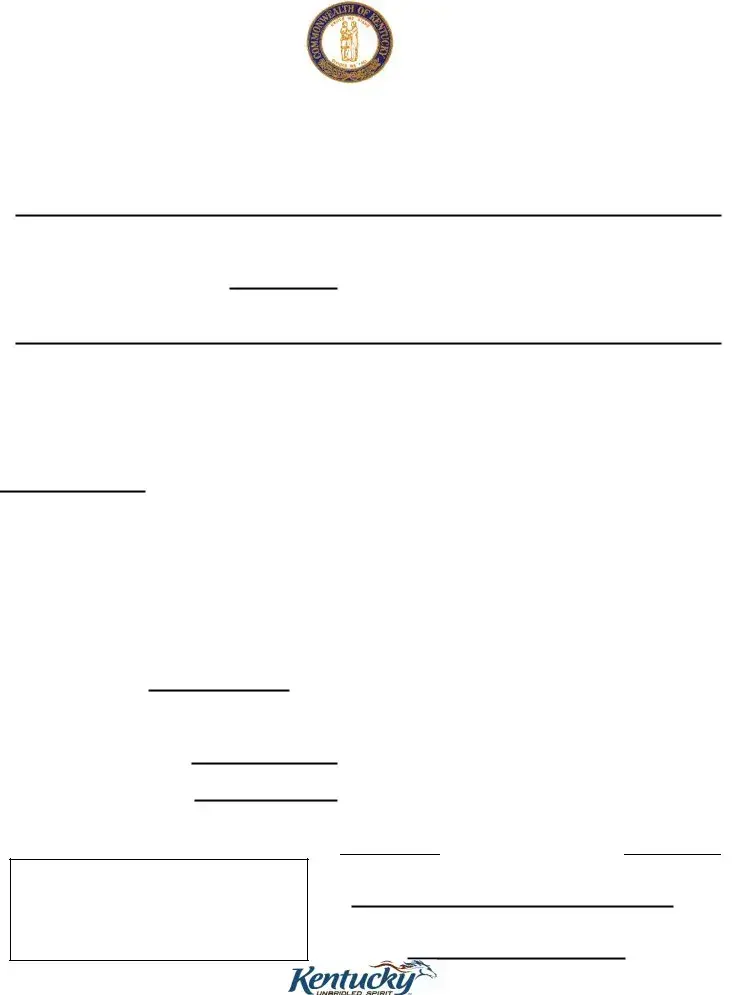The Electrical Permit Application, used for the installation of electrical systems, is quite similar to the Kentucky Boiler Permit Application form. Both require the contractor's details, including licensure information, the project's owner, and the specific location where the work will be carried out. These forms are designed to ensure that installations comply with state regulations, safeguarding public safety through the oversight of qualified professionals.
Building Permit Applications share commonalities with the Boiler Permit Application in terms of structure and intent. They collect comprehensive information about the contractors and property owners, the project location, and a detailed description of the work to be executed. The purpose behind these documents is to ensure that constructions or renovations meet local building codes and standards, providing a safe environment for occupants.
The HVAC Permit Application parallels the Boiler Permit Application by gathering contractor credentials, the property owner's details, and specifics about the project location. These forms usually require a description of the equipment to be installed, including the make and model, mirroring the requirement in the boiler permit to describe the units installed. Such permits help regulate heating, ventilation, and air conditioning installations, maintaining health, safety, and energy efficiency standards.
A Plumbing Permit Application, which is necessary for installing or modifying plumbing systems, reflects the character of the Boiler Permit Application. It gathers similar data, such as contractor information, the owner's details, and the installation address. The specifics about the project and its scope are key to ensuring that plumbing work adheres to codes that protect public health and prevent environmental contamination.
Fire Safety System Permit Applications, required for the installation of smoke detectors, sprinkler systems, and other fire prevention equipment, also share common ground with the Boiler Permit Application. These documents facilitate the oversight of safety installations, calling for detailed project information that helps in prevention planning and response strategies, making them crucial for public safety measures.
The Gas Fitting Permit Application, necessary for projects involving gas lines and appliances, parallels the Boiler Permit in its collection of detailed contractor and site information. It also requires a rigorous description of the work scope, ensuring that gas installations or modifications adhere to strict safety standards to prevent leaks and explosions, thereby safeguarding public welfare.
Environmental Permit Applications, which might be required for projects with potential environmental impacts, similarly necessitate detailed information about the contractors, site, and project specifics. While the focus is broader, encompassing environmental protection, the structural similarity with the Boiler Permit Application underscores a shared goal of ensuring safe and responsible project execution.
The Signage Permit Application, needed for the installation of new signs, mirrors the Boiler Permit Application in its requirements for contractor information, project location, and a description of the work. Although the content of the installations differs, the fundamental purpose of ensuring safety and compliance with local regulations is a shared priority.
Finally, the Demolition Permit Application, which is necessary for tearing down structures, while distinctly different in purpose from installing boilers, requires similar information about contractors and project specifics. It ensures that demolitions are carried out safely, with minimal risk to public safety or surrounding property, paralleling the safety and compliance objectives of the Boiler Permit.

